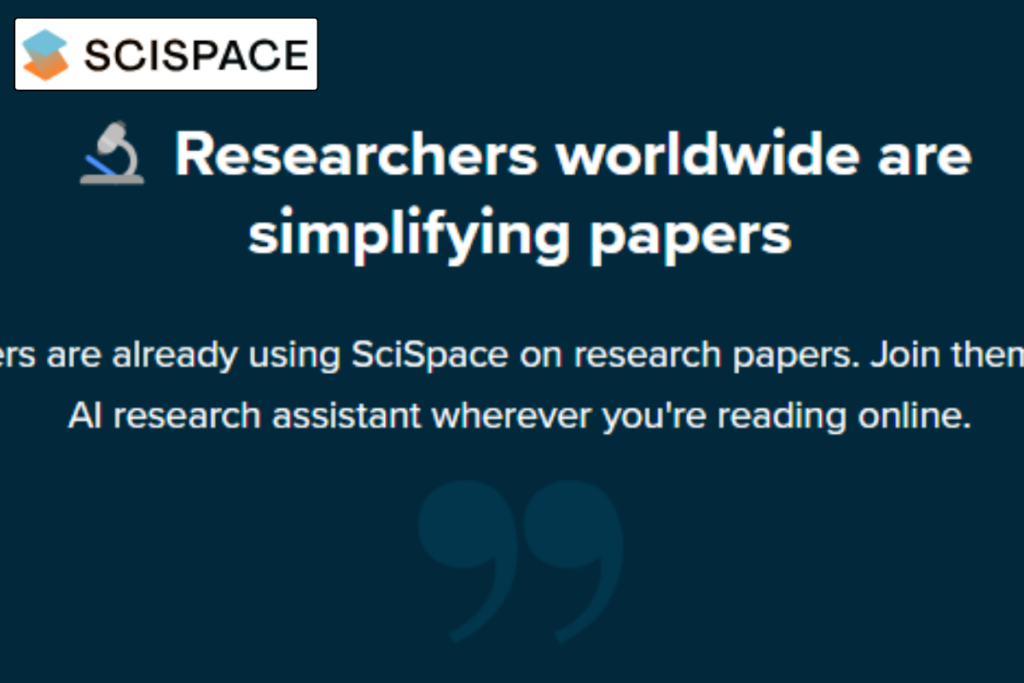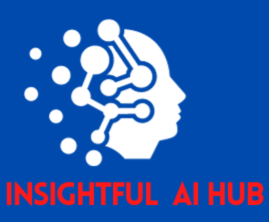Have you ever felt overwhelmed by the sheer volume of research papers available, struggling to find the most relevant ones to your work?
Or perhaps you’ve spent countless hours crafting research proposals and presentations, wishing for a tool to streamline the process. If so, you’re not alone. Today, the landscape of research is undergoing a significant transformation, with generative AI (GenAI) emerging as a powerful tool to empower researchers across diverse fields.
GenAI offers a range of capabilities with the potential to revolutionize the research process. From automatically summarizing complex research papers to generating creative research ideas, these tools can free up researchers’ valuable time and energy, allowing them to focus on the core aspects of their work. But with a multitude of free GenAI options available, choosing the right tool can feel daunting.

In this guide, we’ll delve into the world of free GenAI tools (specifically designed) for researchers. We’ll explore the most promising options, analyzing their strengths and weaknesses to help you identify the ones that best suit your specific needs. Whether you’re a seasoned researcher or just starting your academic journey, this guide will equip you with the knowledge and insights to harness the power of GenAI and unlock new levels of efficiency and productivity in your research endeavors.
Let’s dive right in!
List of 6 Free GenAI Tools For Research
1. ChatPDF
ChatPDF is an AI tool that allows users to upload and chat with any PDF. Users can ask questions about the PDF and receive answers generated by AI. It is useful for students, researchers, and professionals.

Key Features:
- Summarize and answer questions for free
- Multi-File Chats
- Cited Sources
- Any Language
Benefits:
- For Students: Studying for exams, getting help with homework, and answering multiple choice questions.
- For Researchers: Diving into scientific papers, academic articles, and books to get the information they need.
- For Professionals: Navigating legal contracts, financial reports, manuals, and training material.
Pricing:
- Free for basic features
- Paid subscription option for additional features
2. Litmaps
Litmaps is a literature review software that helps you search for academic articles and visualize the results. It also allows for collaboration and monitoring of searches. Some important points are that Litmaps can help you discover articles you didn’t know you needed and visualize how articles are linked together.

Key Features:
- Search for academic articles
- Visualize the results
- Collaborate with others
- Monitor searches
Benefits:
- Discover articles you didn’t know you needed
- Visualize how articles are linked together
- Save time and effort
- Improve your research process
Pricing:
- Free plan for up to 5 users
- Paid plans for larger teams
3. Scite
Scite is a research tool that helps users find and understand scientific articles. It does this by providing “Smart Citations” that show the context of a citation and whether it supports or contrasts the cited claim. Scite also has other features, such as a search function and the ability to create custom dashboards. scite is used by students and researchers from around the world.

Key Features:
- Smart Citations: See how a publication has been cited and whether the citing articles support or contrast the original publication.
- Search by citation statements
- Create custom dashboards
Benefits:
- Find relevant research articles quickly and easily
- Understand the context of citations
- Organize your research
Pricing:
- Free plan for individuals
- Paid plans for teams
4. Scispace(Typeset.io)
Typeset.io is a research tool that helps users find and understand scientific articles. It offers a repository of research papers across domains, with metadata of 200 million+ papers and 50 million+ Open Access full-text PDFs. Users can also chat with PDFs and conduct literature reviews faster using SciSpace.

Key Features:
- Repository of research papers across domains
- Chat with PDFs
- Conduct literature reviews faster
Benefits:
- Find relevant research articles quickly and easily
- Understand the context of citations
- Organize your research
Pricing:
- Free plan for individuals
- Paid plans for teams
5. GraphMaker
Graph Maker is a tool that helps users create charts and graphs. Users can upload data in the form of a spreadsheet or speak to the tool using natural language. The tool then creates a variety of charts, including bar charts, scatter plots, and pie charts.

Key Features:
- Create charts and graphs from the data
- Upload data in the form of a spreadsheet
- Speak to the tool using natural language
Benefits:
- Create professional-looking charts and graphs quickly and easily
- Communicate your data effectively
- Save time and effort
Pricing:
- Free plan for limited use
- Paid plans for additional features
Last but not the least!
6. ResearchRabbit
ResearchRabbit is a research paper recommendation tool that helps users stay up-to-date on the latest research. It offers features such as personalized recommendations, paper collections, and author network visualizations. It is free for researchers.

Key Features:
- Personalized recommendations
- Paper collections
- Author network visualizations
Benefits:
- Stay up-to-date on the latest research
- Find relevant research papers quickly and easily
- Organize your research
Pricing:
- Free for researchers
Confused about selecting the perfect GenAI tool(s) for your needs? Here are guidelines that help you a lot.
Let’s dive deeper!
5 Guidelines for Choosing GenAI Tools for Research Work
1. Identify Your Specific Needs:
Before diving into the vast array of options, clearly define your research goals and identify specific tasks where GenAI can be beneficial. This could include tasks like:
- Literature review and analysis: Identifying relevant research papers, summarizing key findings, and exploring trends.
- Data analysis and visualization: Transforming and interpreting data, generating insights, and creating compelling visual presentations.
- Creative research ideation: Sparking new ideas, generating hypotheses, and exploring alternative perspectives.
- Writing and editing research documents: Automating repetitive tasks, checking for grammar and clarity, and generating drafts.
2. Assess Tool Capabilities and Features:
Once you understand your needs, analyze different GenAI tools based on their capabilities and features. Consider factors like:
- Supported tasks and functionalities: Ensure the tool offers features that directly address your specific research requirements.
- Data compatibility and integration: Check if the tool can handle your data formats and integrate seamlessly with your existing research tools.
- Accuracy and reliability: Evaluate the tool’s performance based on independent reviews and user testimonials.
- User interface and accessibility: Choose a tool with an intuitive interface that is easy to learn and use.
3. Prioritize Trust and Transparency:
Given the evolving nature of GenAI, prioritize tools with a strong focus on trust and transparency. Look for:
- Clear explanations of algorithms and methodologies: Understand how the tool generates its outputs and the underlying principles.
- Openness to feedback and improvement: Choose developers who actively engage with users and incorporate feedback into their development process.
- Data privacy and security: Ensure the tool protects your research data and adheres to ethical data practices.
4. Evaluate Cost and Sustainability:
GenAI tools come with varying pricing models, from free to subscription-based. Consider:
- Initial investment: Assess the upfront cost of the tool and its compatibility with your research budget.
- Long-term sustainability: Evaluate the cost of ongoing use, including potential upgrades and additional features.
- Free or open-source alternatives: Explore free or open-source options that might offer similar functionalities without financial constraints.
5. Experiment and Compare:
Don’t be afraid to try different tools and compare their performance firsthand. Many GenAI tools offer free trials or limited feature access, allowing you to test them out before committing. By actively experimenting and comparing different options, you can identify the tool that best fits your research needs and preferences.
Remember, choosing the right GenAI tool is an ongoing process. As your research evolves, your needs might change, requiring you to reevaluate and explore new tools. By keeping these guidelines in mind, you can make informed decisions and leverage the power of GenAI to propel your research forward.

I am quite happy that YOU are still stuck with us. We, together, have looked through so many materials.
Let’s recap what we have learnt and conclude the article.
Conclusion: Empowering Your Research Journey with Free GenAI Tools
The research landscape is undergoing a significant transformation with the advent of generative AI (GenAI). These powerful tools hold immense potential to empower researchers across diverse fields, streamlining processes and boosting productivity. However, navigating the vast array of GenAI options can be overwhelming.
This article has provided a comprehensive guide to navigating this landscape, equipping you with the knowledge and insights to make informed choices. We explored several free GenAI tools designed specifically for researchers, highlighting their key features, benefits, and limitations. By following the outlined 5 guidelines: identifying your specific needs, assessing tool capabilities, prioritizing trust and transparency, evaluating cost and sustainability, and experimenting and comparing, you can unlock the full potential of GenAI and propel your research forward.
Remember, GenAI tools are not meant to replace traditional research methods but rather to augment and enhance them. By leveraging these AI-powered solutions alongside your existing skills and expertise, you can delve deeper into your research endeavours, break down barriers, and contribute meaningful discoveries to your field. Embark on this exciting journey of utilising free GenAI tools and witness how they can revolutionise your research journey and empower you to achieve remarkable breakthroughs.
Thanks! I hope you have enjoyed this article and found some helpful content.
Feel free to share your insights with us.






